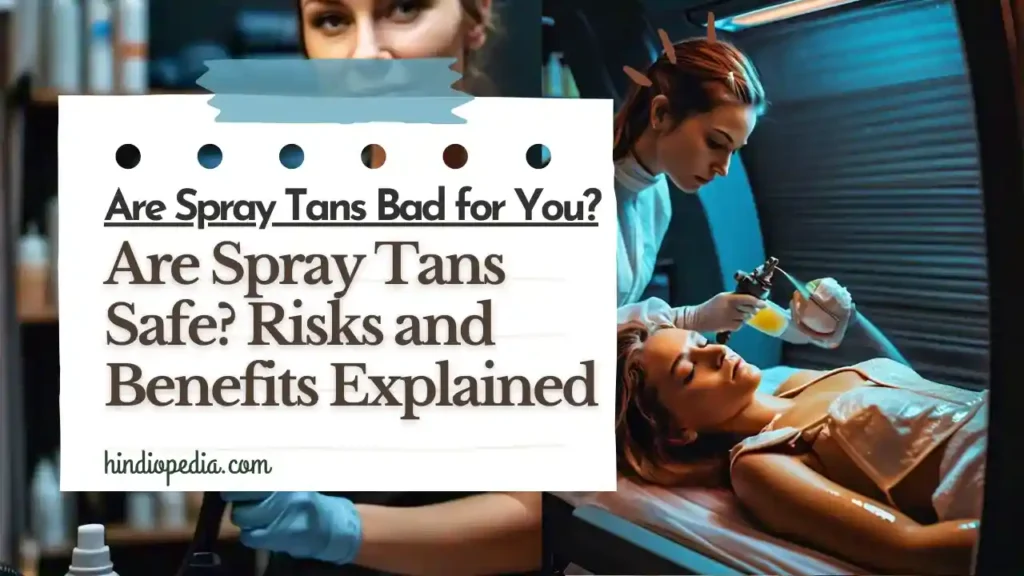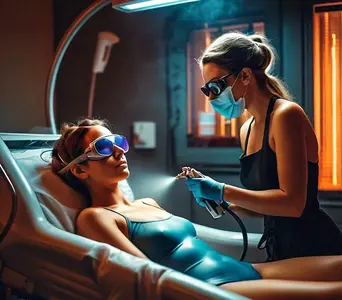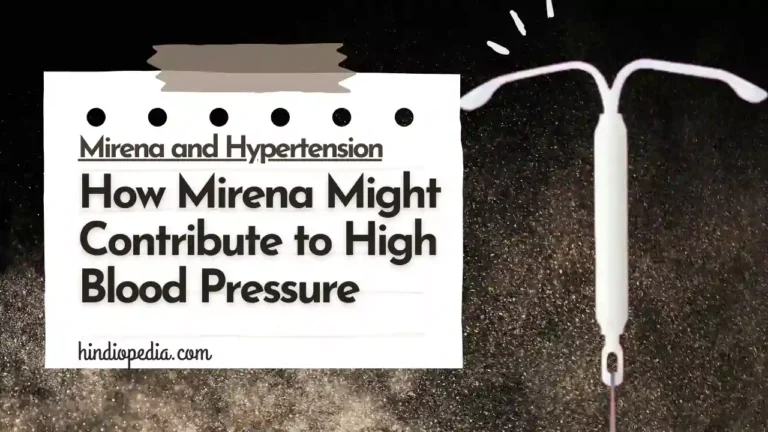Are Spray Tans Bad for You? Risks and Benefits Explained
Spray tans offer a UV-free tanning option using DHA. Potential risks include inhalation hazards, skin reactions, and eye irritation. Benefits include quick results and customizable color. Proper precautions minimize risks. Alternatives like gradual self-tanners exist. While safer than UV tanning, spray tans aren’t risk-free. Consider individual health factors when choosing tanning methods.

Spray tans have become a popular alternative to traditional sunbathing. They offer a quick and easy way to achieve a sun-kissed glow without exposure to harmful UV rays. But are spray tans truly safe? This article examines the potential risks and benefits of spray tanning.
What is a Spray Tan?

A spray tan is a form of sunless tanning. It involves applying a fine mist to the skin to produce a tanned appearance. The active ingredient in most spray tans is dihydroxyacetone (DHA). DHA reacts with amino acids in the skin’s surface to create a brownish color.
How Spray Tans Work
When DHA is applied to the skin, it causes a chemical reaction. This reaction produces pigments called melanoidins. These pigments darken the skin, creating a tanned look. The effect typically lasts 5-7 days before fading as the skin naturally exfoliates.
Safety Concerns
While spray tans are generally considered safer than UV tanning, they’re not without risks.
Here are some potential concerns:
Inhalation Risks
During a spray tan session, tiny droplets of the tanning solution become airborne. These droplets contain DHA and other chemicals. Inhaling these substances raises health concerns.
A 2012 panel of medical experts reviewed the available research on DHA. They concluded that inhaling DHA could potentially damage DNA and increase cancer risk. However, more research is needed to fully understand these effects.
To minimize inhalation risks, it’s crucial to:
- Wear protective gear for eyes, nose, and mouth
- Ensure proper ventilation in the tanning area
- Avoid inhaling the spray as much as possible
Skin Reactions
Some people experience skin irritation from spray tans. Common reactions include:
- Rashes
- Itching
- Redness
- Dry skin
These reactions are often due to allergies or sensitivities to ingredients in the tanning solution. Patch testing before a full application helps identify potential reactions.
Eye and Mucous Membrane Irritation
The FDA has not approved the use of DHA on areas covered by mucous membranes. This includes the lips, nose, and area around the eyes. Contact with these areas causes irritation in some people.
Uneven or Orange Color
While not a health risk, poor application technique leads to uneven coloring or an unnatural orange hue. This outcome is more common with at-home kits than professional applications.
Benefits of Spray Tanning
Despite these concerns, spray tanning offers several advantages over traditional tanning methods:
UV Protection
Unlike sun tanning or tanning beds, spray tans don’t expose the skin to harmful UV radiation. This significantly reduces the risk of skin cancer and premature aging associated with UV exposure.
Quick Results
A spray tan session typically takes 15-20 minutes. The color develops fully within 24 hours. This provides a much faster result compared to gradually building a tan through sun exposure.
Customizable Color
Professional spray tans offer customizable color options. This allows individuals to achieve their desired shade without risking overexposure to the sun.
Boosts Confidence
For many people, having tanned skin boosts self-confidence. Spray tans provide this benefit without the health risks of UV tanning.
Minimizing Risks
To minimize potential risks associated with spray tanning:
- Choose a reputable salon with trained professionals
- Use protective gear for eyes, nose, and mouth
- Avoid inhaling the spray
- Don’t tan if you have open cuts or skin conditions
- Perform a patch test before your first full application
- Moisturize skin well before and after tanning
- Don’t exceed the recommended frequency of applications
Ingredients to Avoid
Some spray tan solutions contain potentially harmful ingredients. When choosing a spray tan product or salon, avoid those containing:
- Parabens: These preservatives disrupt hormone function
- Alcohol: Dries out the skin and increases absorption of other chemicals
- Fragrances: Often contain allergens and irritants
- Mineral oil: Clogs pores and prevents skin from breathing
Alternatives to Spray Tanning
For those concerned about the potential risks of spray tanning, several alternatives exist:
- Gradual Self-Tanners: These lotions or creams contain low levels of DHA. They build color gradually over several days, reducing the risk of inhalation.
- Bronzers: These wash-off products provide temporary color without the use of DHA.
- Tanning Towelettes: Pre-soaked with self-tanner, these reduce the risk of inhalation associated with sprays.
- Natural Oils: Some natural oils, like carrot oil, provide a subtle tanning effect when applied regularly.
The Bottom Line
Spray tans offer a safer alternative to UV tanning, but they’re not risk-free. The main concerns involve inhalation of DHA and potential skin reactions. By taking proper precautions and choosing quality products, most people can enjoy spray tans safely.
However, individuals with sensitive skin, respiratory issues, or concerns about chemical exposure should consider alternatives. As with any cosmetic treatment, it’s important to weigh the potential risks against the desired benefits.
Remember, no tan is worth compromising your health. Always prioritize skin health and overall well-being when considering tanning options.
References:
- U.S. Food and Drug Administration. “Sunless Tanning: What You Need to Know.” FDA.gov, 2019.
- Garone M, Howard J, Fabrikant J. “A review of common tanning methods.” J Clin Aesthet Dermatol. 2015;8(2):43-47.
- Petersen AB, et al. “Sunless skin tanning with dihydroxyacetone delays broad-spectrum ultraviolet photocarcinogenesis in hairless mice.” Mutat Res. 2004;557(1):9-18.
- Pollack SV. “Dihydroxyacetone-containing sunless or self-tanning lotions.” J Am Acad Dermatol. 1999;40(3):507-508.
- Nguyen BC, Kochevar IE. “Influence of hydration on dihydroxyacetone-induced pigmentation of stratum corneum.” J Invest Dermatol. 2003;120(4):655-661.






